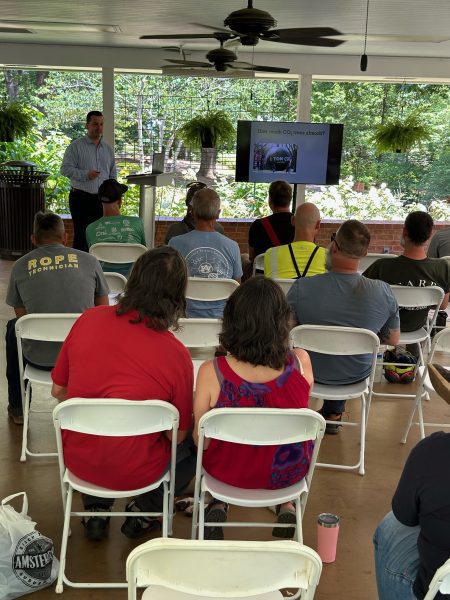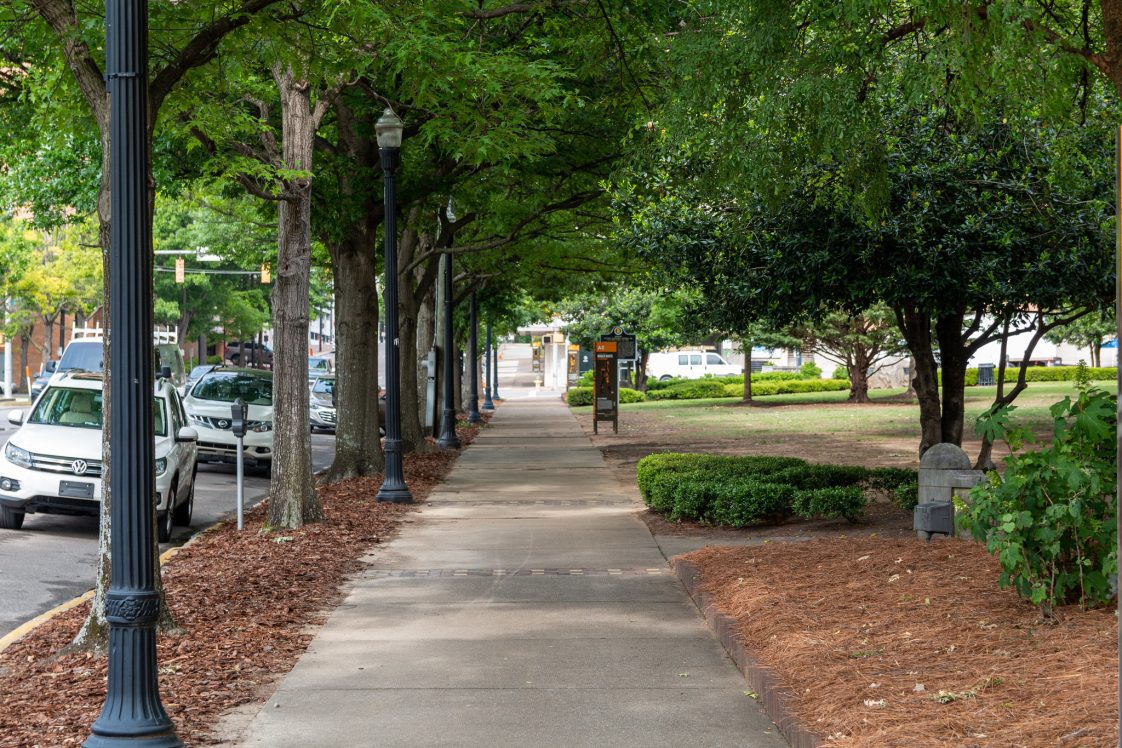Forestry & Wildlife

Urban forests include all types of woody plants, trees, shrubs, and green spaces in public and private areas in urban settings. The term urban is crucial, and it refers to all settings created and altered by humans, as opposed to natural forest areas where human intervention is absent or minimal (except intensively managed forests for industry purposes such as wood production). Urban forests are complex ecosystems that include biotic factors (e.g., plants, trees, and animals) and abiotic factors (e.g., soil and climatic conditions) interacting across a range of spatial and temporal scales. What makes urban forest ecosystems unique is human presence, because human actions affect the sustainable growth of urban trees, and urban forests affect the life quality of people living in cities and other urban areas. Therefore, the beliefs and actions of residential, municipal, and community leaders are a critical component of urban forest maintenance and management.
Benefits of Urban Forests
Trees that grow in urban areas provide several ecological and socioeconomic benefits to human societies, including improved human health, shade, biodiversity, temperature regulation, noise reduction, air pollutants uptake, water purification, recreation, atmospheric carbon dioxide sequestration, and more.
Previous studies have shown that a mature tree may absorb more than 48 pounds of carbon dioxide from the atmosphere in one year. Carbon dioxide is one of the main greenhouse gases of climate change that is increasing the heat in the atmosphere and in cities. Therefore, urban forests play an important role in climate change mitigation, while cities strive to adapt to heat, tornados, hurricanes, and other extreme weather events.
Assessing Urban Trees

The Alabama Cooperative Extension System provides several learning opportunities on topics related to urban trees.
While urban forests do have their benefits, urban trees may also pose threats to properties and safety. Urban forests in Alabama mostly consist of old trees that have received limited maintenance and care, particularly in disadvantaged communities because of limited expertise in tree management and lack of budgets for tree care. Alabama has been impacted–and will continue to be impacted–by devastating tornados and hurricanes. Storms increase the likelihood of tree failures. In the past, these failures have damaged homes, damaged utilities, and injured and killed people. Therefore, there is an imperative need to assess the health status, vigor, and risks associated with trees growing in backyards, parks, and on streets.
Safety Starts with Selection
The first step toward safer trees is proper tree selection. Proper tree species selection depends on several biological and socioeconomic factors and is the foundation for creating healthy and sustainable urban forests. The following are things to consider when selecting trees for an urban environment:
- Cost-benefit analysis. A good practice for selecting appropriate tree species for planting is to conduct a basic cost-benefit analysis. People need to select a species that can provide the benefits that communities anticipate, while also minimizing the costs for planting and maintenance during the lifetime of the selected tree. For example, London plane (Platanus x acerifolia) trees provide shade during the summer, and they allow sunlight to penetrate their canopy during the winter, which implies energy benefits for adjacent buildings. However, London plane trees grow big, and they require a lot of growing space in maturity, which implies more resources for maintenance.
- Local conditions. It is important to select tree species that are well adapted to the local environmental conditions. Climate type, soil attributes, soil compaction, soil nitrogen and water availability, air pollution, drainage patterns, and site history are all important factors to consider.
- Social factors. People also often need to consider social factors in tree selection, because there are heritage or ceremonial species that may relate to the cultural needs of a community.
- Availability. Because most urban trees are planted–except for those growing naturally in urban forest patches–the species that is selected also depends on nursery availability.
- Native versus non-native. A common dilemma in tree selection is whether to select non-native or native species. The urban environment is significantly altered by anthropogenic activities, and it can be extremely different from the local natural ecosystem conditions. Therefore, native species might not survive in this human-created environment, whereas a non-native species may perform better and thrive. However, non-native species can be invasive and disturb the urban ecosystem and adjacent natural ecosystems. Arborists, city planners, and homeowners should always follow the guidelines of forestry agencies (e.g., Alabama Forestry Commission) and avoid planting invasive species.

